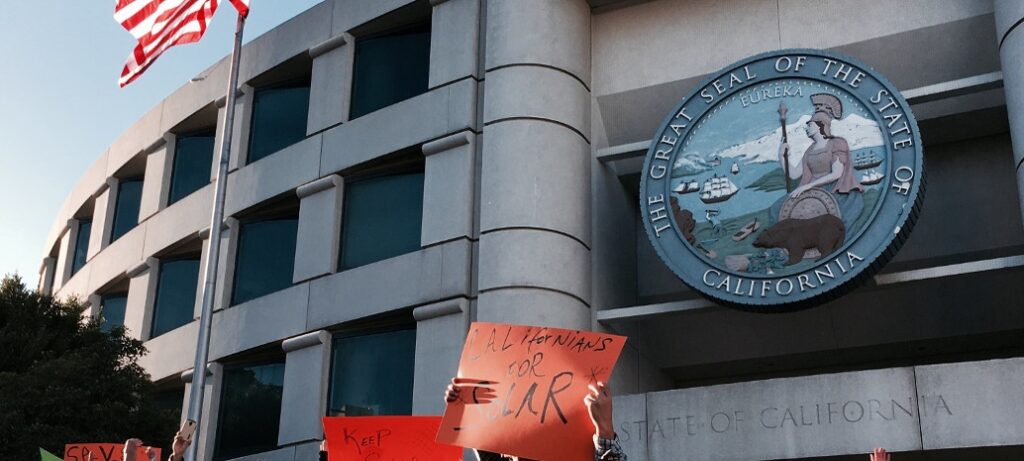WEBINAR: How Advantageous is PG&E’s Option S, daily demand charge rate tariff, for Energy Storage Projects?

In March of 2021, PG&E finished mandatory transitioning all C&I customers to their new “B” rates, which featured the 4 – 9 pm “on-peak” period. Within this new suite of rates was the new Option S, daily demand charge rate, which was designed to be a storage-friendly rate option.
PG&E’s Storage-friendly “Option S” Daily Demand Charge Rate – How Advantageous is it for Solar + Storage Projects?

We studied PG&E’s new Option S rate to determine how utility bill savings for solar + storage projects compared to both the Option R rate and the default option. In 80% of the cases we ran, eligible C&I PV+ESS customers are best off opting onto Option S.
Hawaii Public Utilities Commission (PUC) Approves Emergency Demand Response Program, Offering Lucrative Incentives for Energy Storage Systems

The Hawaii PUC recently approved an Emergency Demand Response Program (EDPR) to swiftly incentivize
energy storage projects to help replace a 180-megawatt (MW) coal plant in Oahu being retired in September 2022. The Aloha state’s EDPR and Scheduled Dispatch Program Rider (SDP) is taking a
proactive approach to help Hawaiian Electric Company (HECO) alleviate reduced resources ahead of a coal plant closure that currently provides about 15% of the demand on the island.
C&I Energy Storage Market in 2021: Optimism, Value Streams and Tailwinds

There are a lot of reasons to be optimistic about the future growth of the commercial and industrial (C&I) energy storage market. At Energy Toolbase, we have seen this market up-close over the last 6 years, including a lot of the fits and starts. As we head into 2021, we …
ETB Ask an Expert: Kelly Speakes-Backman from the Energy Storage Association on Federal Energy Storage Policy Issues including FERC 841, FERC 2222, and ITC

In this “ETB Ask an Expert” interview, we discussed a few key, current federal energy storage policy topics with Kelly Speakes-Backman, the CEO at the Energy Storage Association (ESA). Topics include FERC Order 1841, FERC Order 2222, Energy Storage (ITC) investment tax credit legislation, and ESA’s recently announced 100 GW’s by 2030 vision.
The Net Metering Successor Tariff “NEM-3” Proceeding in California has Officially Kicked Off

Key takeaways: The CPUC has formally opened its NEM-3 proceeding, which will redefine the rules for the Net Energy Metering (NEM) tariff in California. The recently released NEM 2.0 lookback study concluded that NEM 2.0 customers have net benefited from the structure and ratepayers have seen increased rates as a …
ETB Ask an Expert: SGIP Program history & current market update with Scott Murtishaw from CALSSA

In our very first “ETB Ask an Expert” interview series we explored the topic of SGIP, the Self Generation Incentive Program in California, which is the longest running and most lucrative behind-the-meter energy storage incentive program in the country. The SGIP program was recently re-upped with $675 million dollars of …
Net Energy Metering in Massachusetts: A Current State of the Union

Net Energy Metering, often referred to as NEM, is widely considered one of the most important policy mechanisms that have allowed customer-sited solar to flourish over the last 20 years. NEM policies effectively allow behind-the-meter solar customers to sell their exported electricity back to the utility at the retail rate. …
Energy Toolbase – Delta Energy Storage Integration Resource Guide

Table of Contents Overview – Delta ESS Integration on Energy Toolbase Energy Toolbase iEMS Signing up – Delta Commercial ESS Integration Using Delta ESS Integration Transactions – when using the Delta ESS Integration Final Checklist
Acumen EMS™ In-Depth Case Study: Using Energy Storage and Solar PV to Capture 71% of the Maximum Possible Demand Charge Savings for a Commercial Customer in Northern Canada

Acumen EMS In-Depth Case Study: Using Energy Storage and Solar PV to Capture 71% of the Maximum Possible Demand Charge Savings for a Commercial Customer in Northern Canada